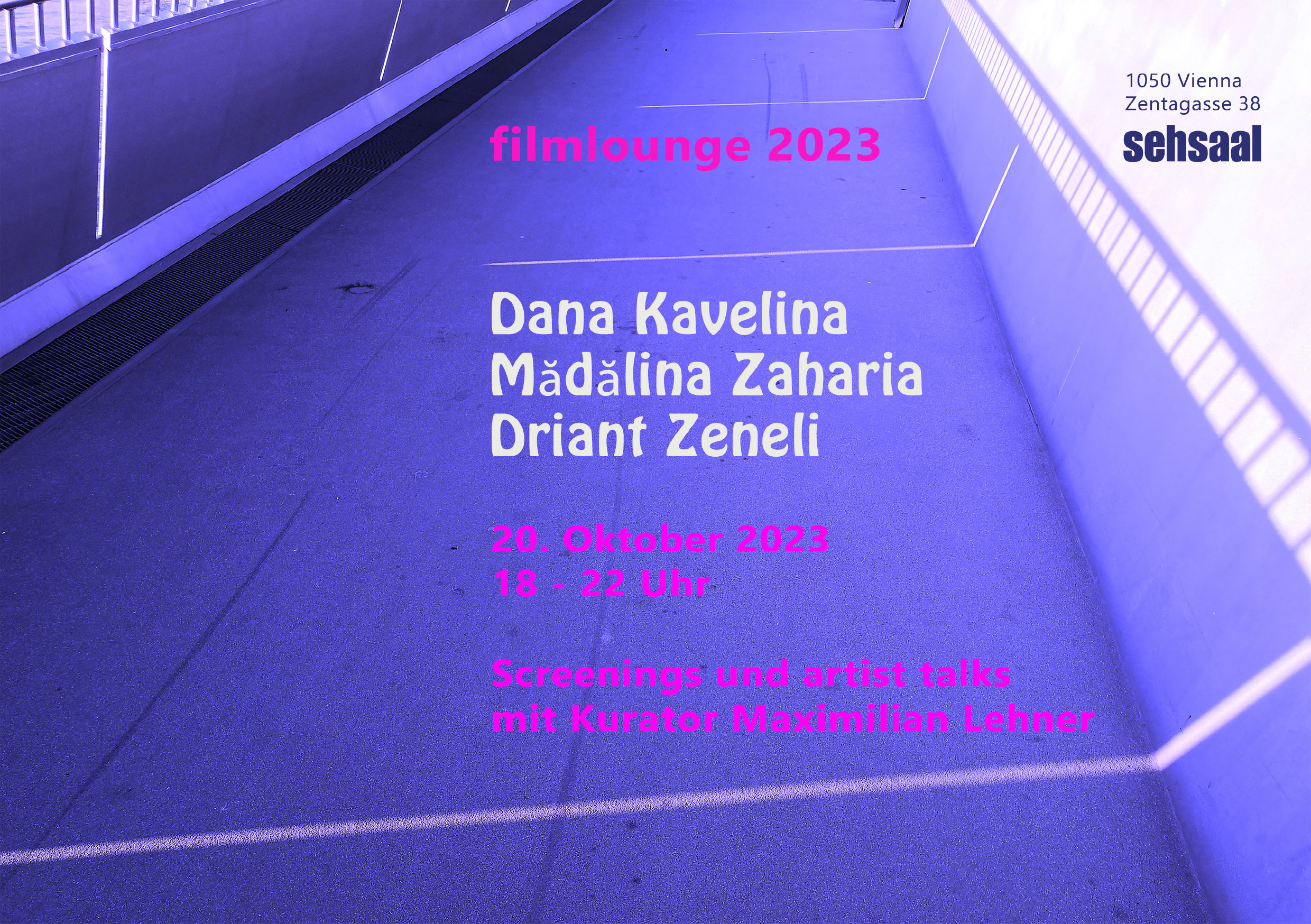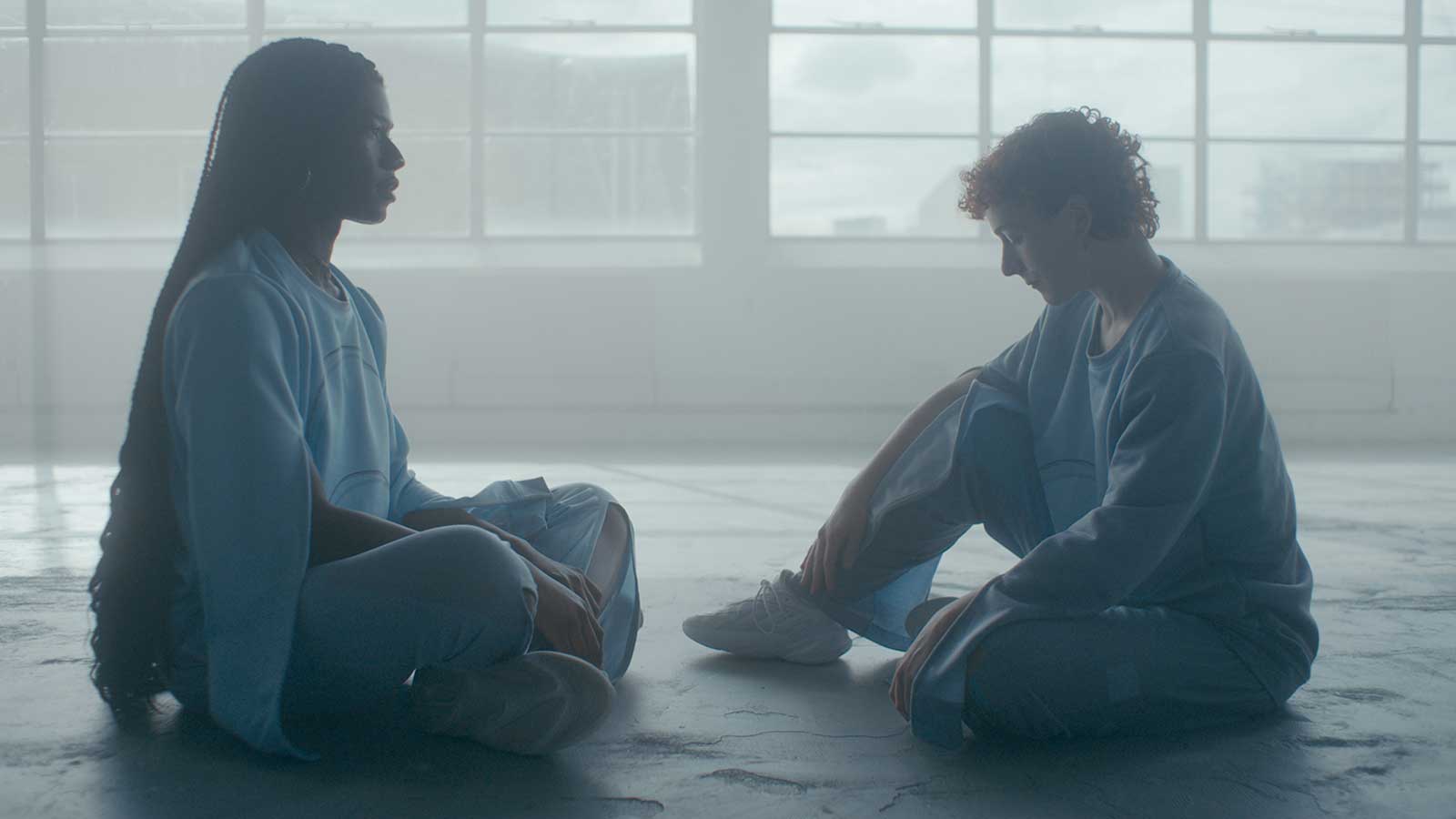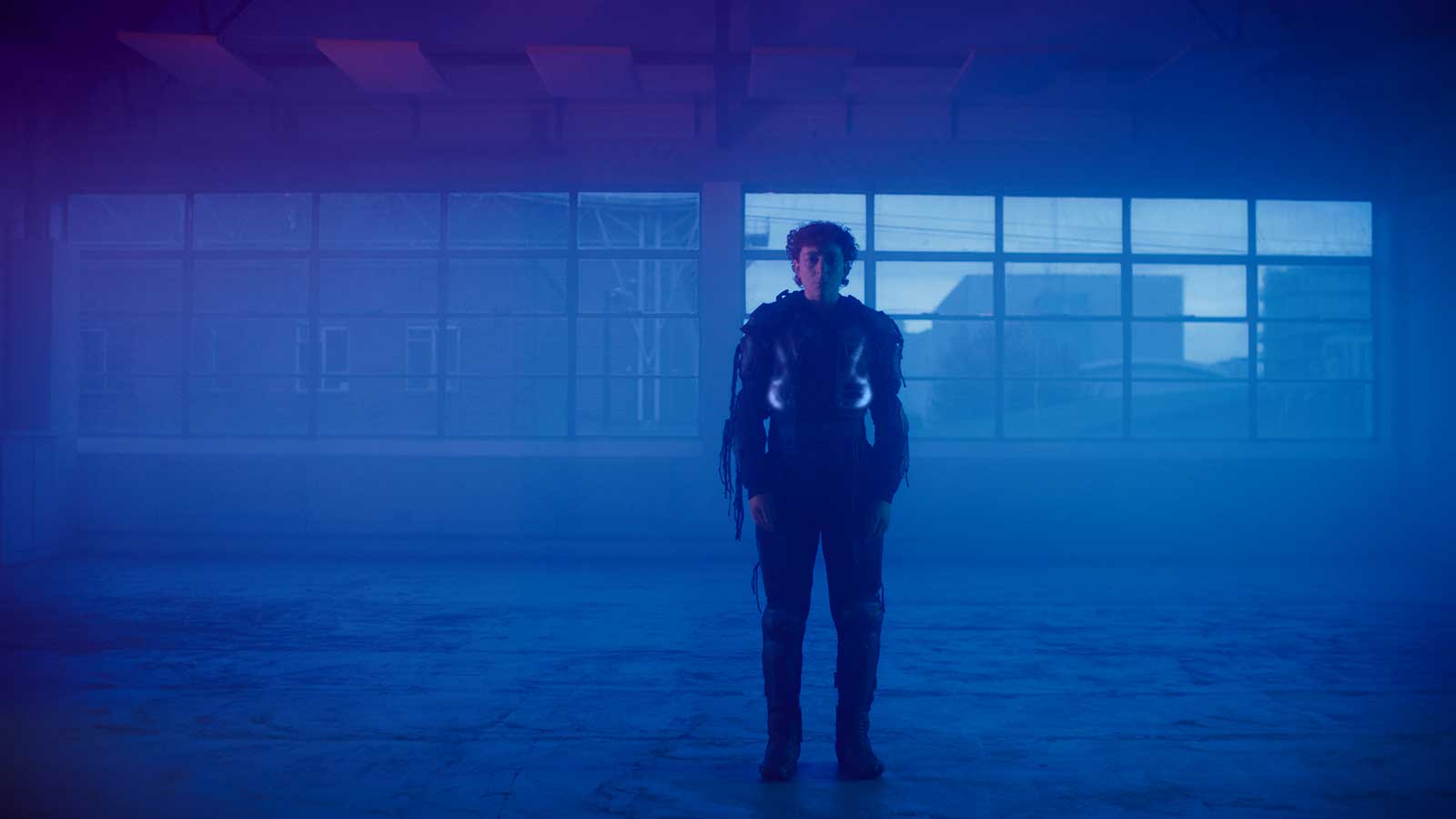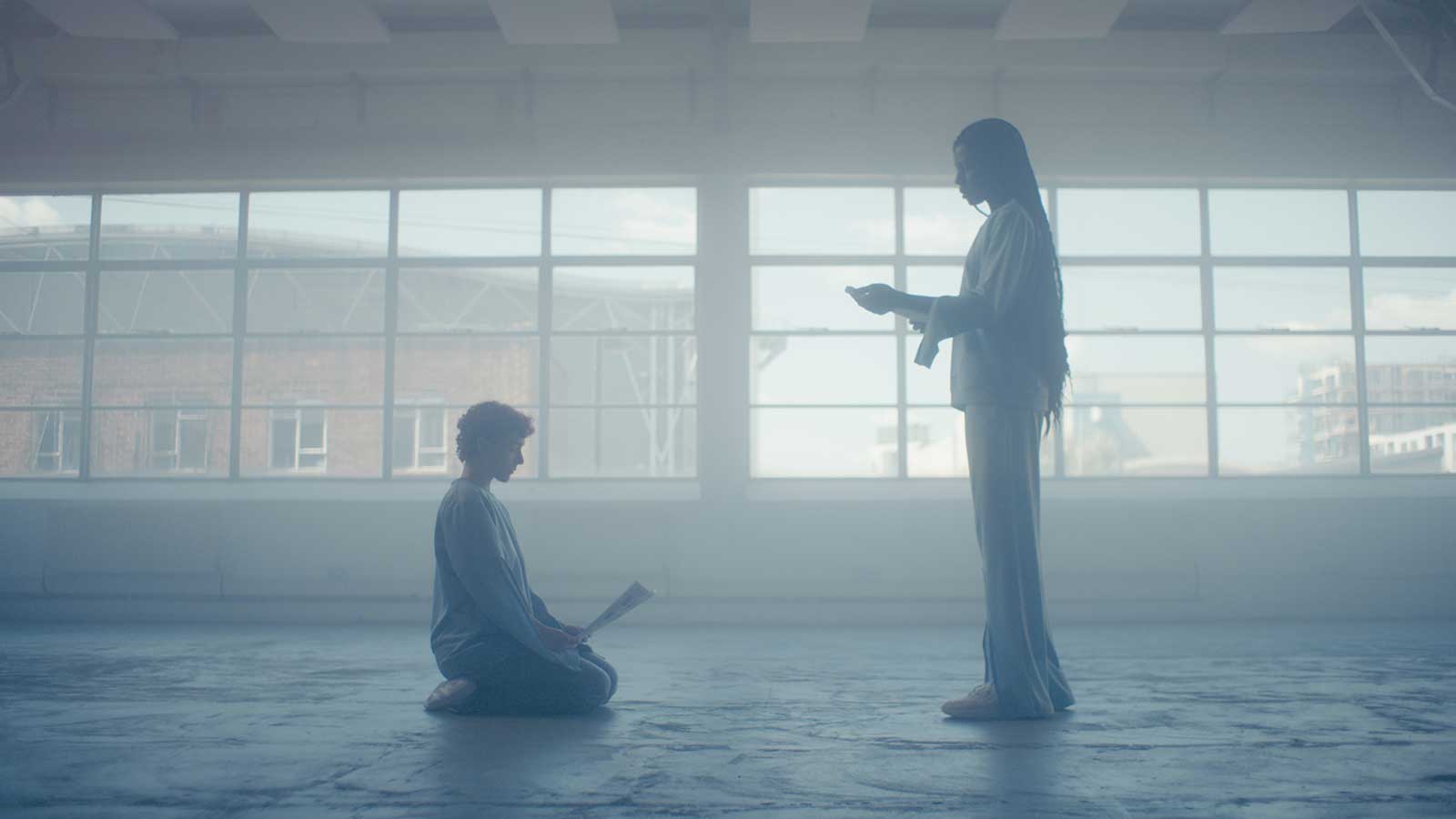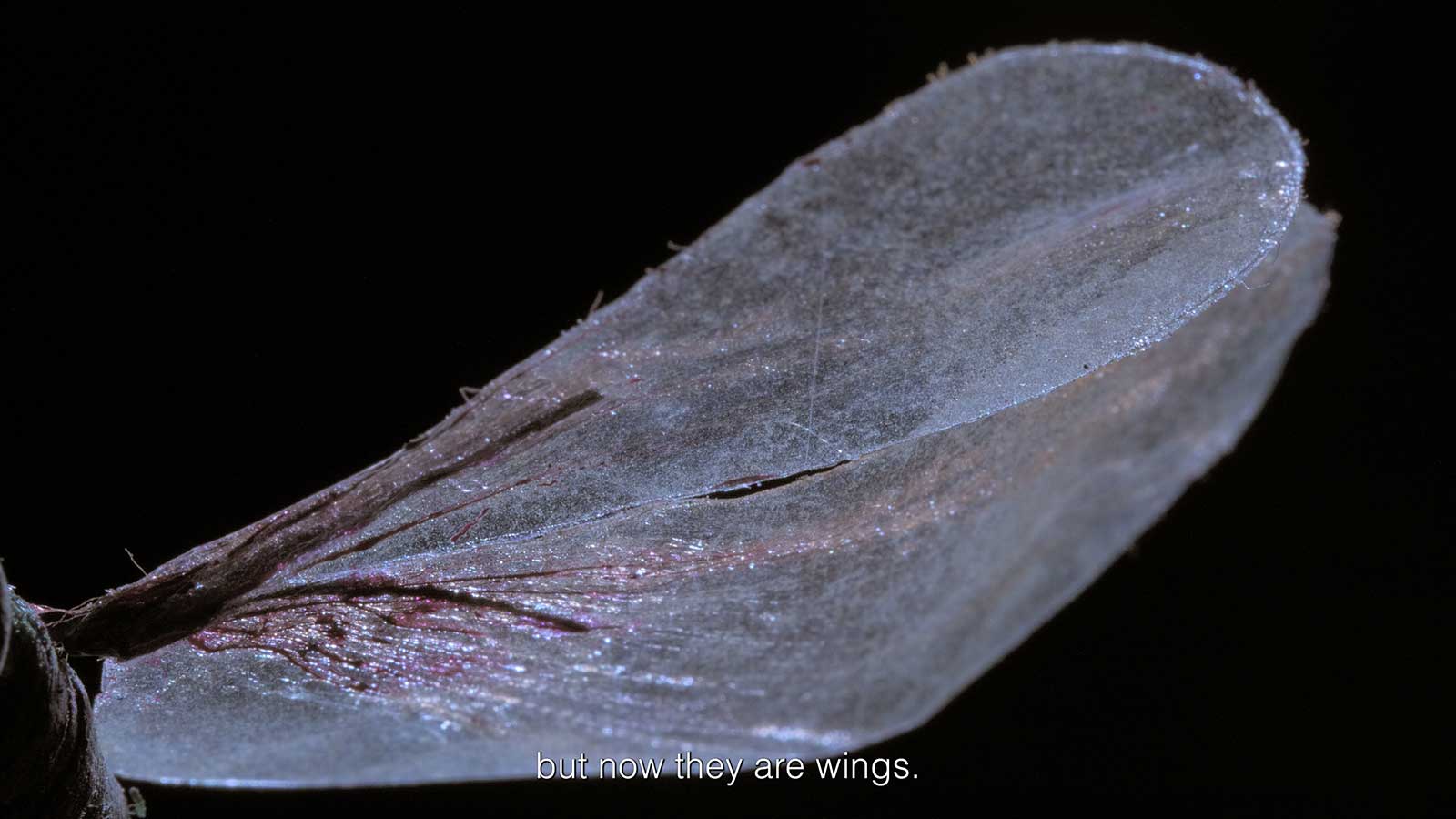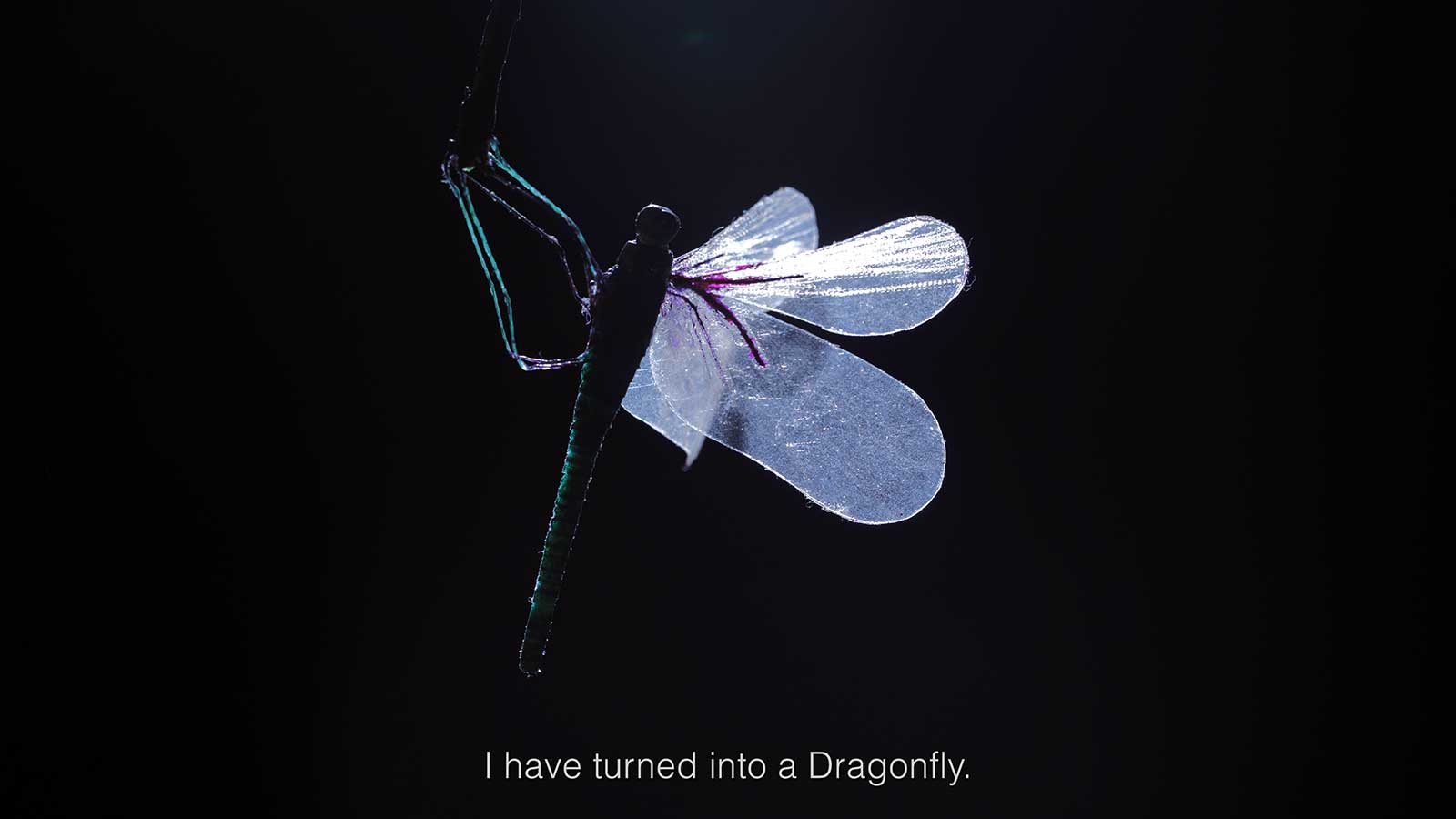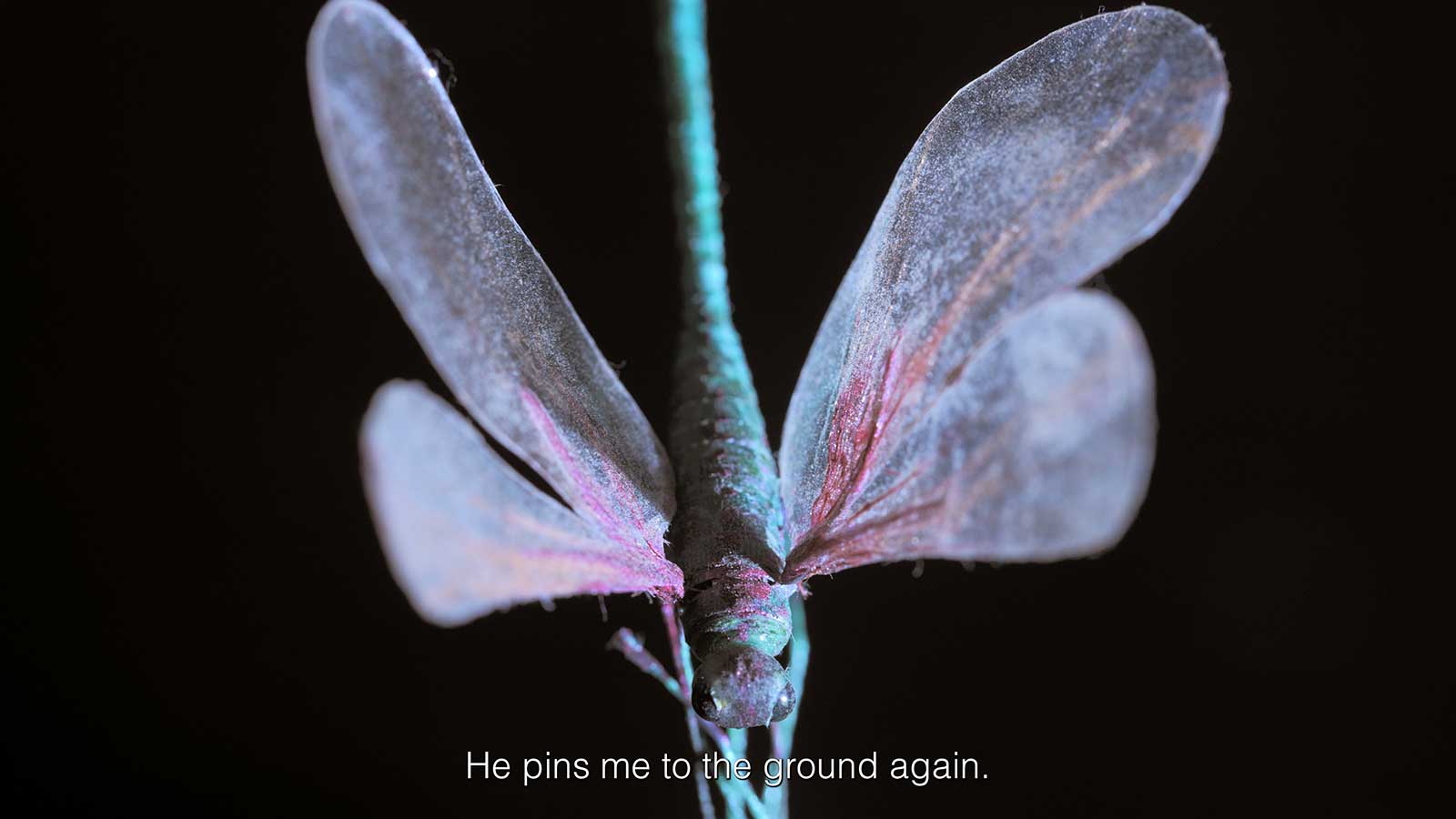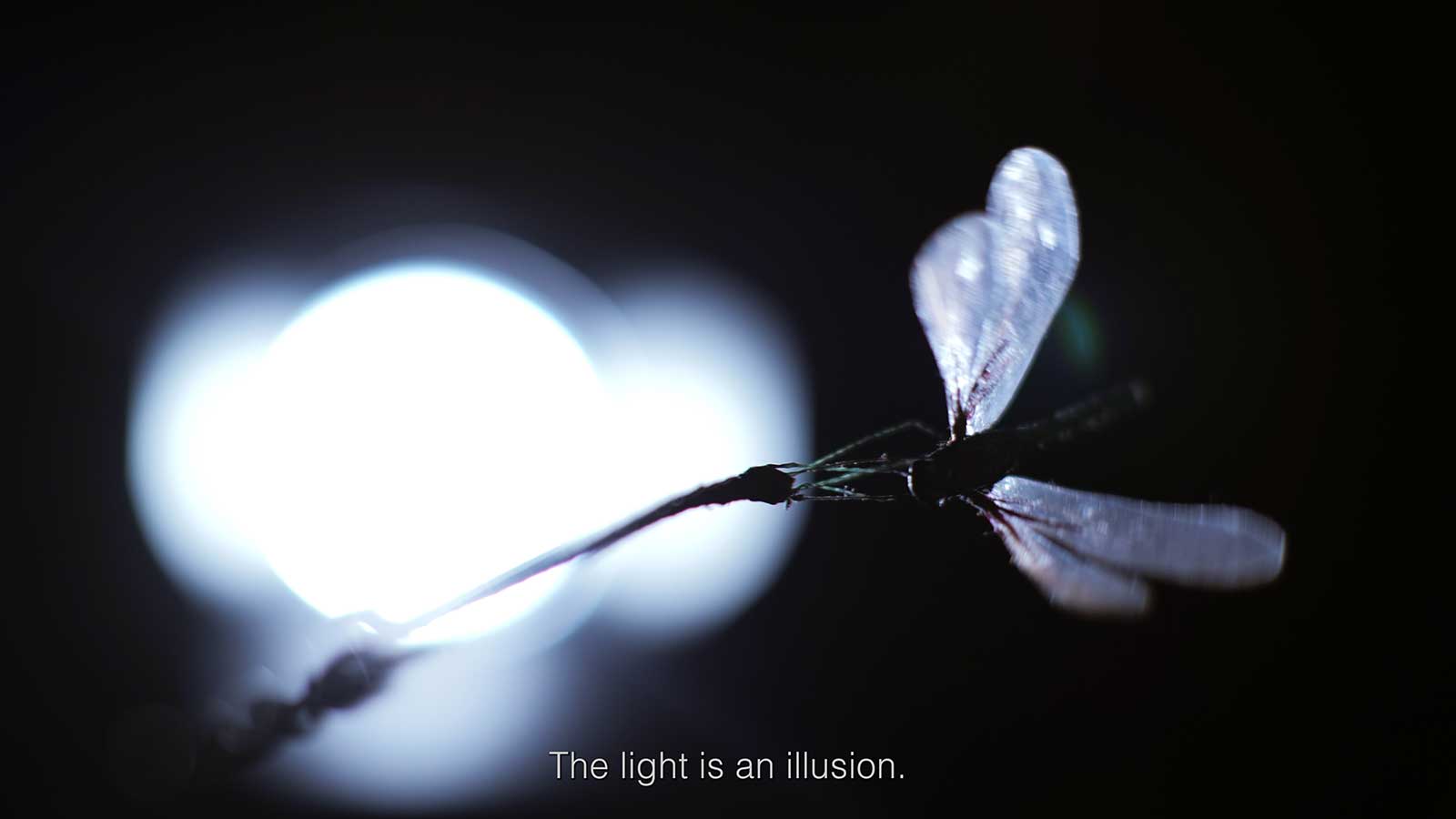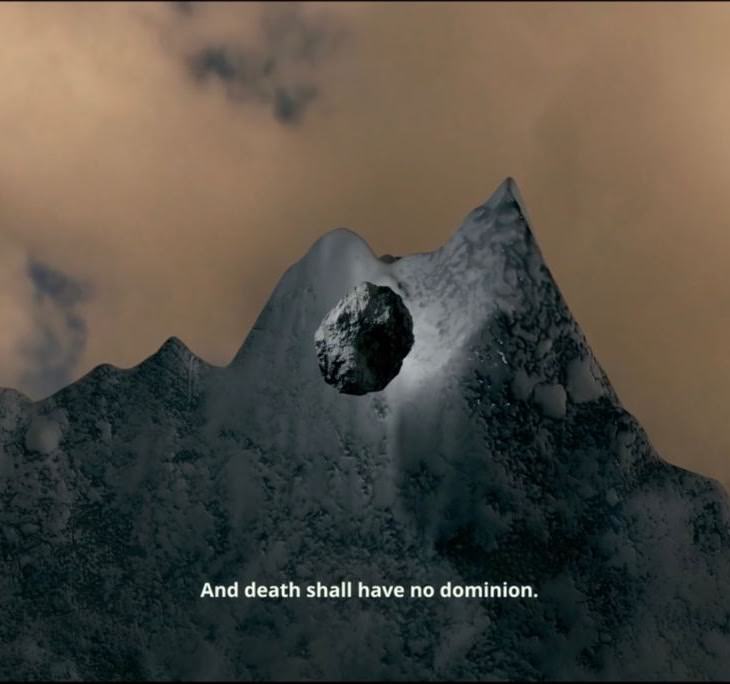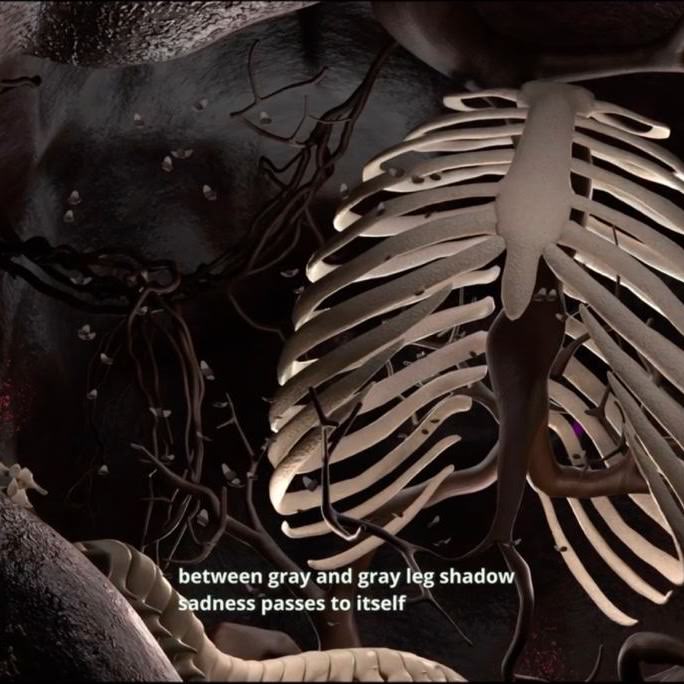filmlounge 2023
I will not be sad in this world
mit Filmen von Dana Kavelina, Mădălina Zaharia und Driant Zeneli
kuratiert von Maximilian Lehner
20. Oktober 2023 ab 18 Uhr
Screenings und artist talks mit Kurator Max Lehner.
Die Filmschaffenden sind anwesend. Eintritt frei.
- Mădălina Zaharia: TristxtOTL
Vereinigtes Königreich/Rumänien 2023, 21‘49‘‘, Englisch - Dana Kavelina: It Can’t Be That Nothing Can Be Returned
Ukraine 2022, 52‘, Russisch mit englischen Untertiteln - Driant Zeneli: How deep can a Dragonfly swim under the Ocean?
Albanien 2021, 11‘23“, Albanisch mit englischen Untertiteln
Überbordende Traurigkeit, die nicht zum Klischee gemacht, sondern ernst genommen wird als eine Relation zur Welt. Die Verbindung zwischen individuellem Gefühlsleben und ‚der Welt‘ wird oft vorschnell zu einer Spannung, die nach Auflösung verlangt. Die Filmlounge beantwortet das Jahresthema des sehsaals mit filmischen Arbeiten, welche die Kraft einer Traurigkeit erkennen, die nicht überwunden oder verdrängt werden möchte und nicht unbedingt zu produktiven neuen Erkenntnissen führt.
Warum bin ich traurig? Warum lebe ich in einer Welt, die so vielen Tieren und Menschen Leid bereitet, die so viele von uns unglücklich macht? Nicht nur Leid und Ungerechtigkeit, sondern auch das Unvermögen, allein Dinge zu ändern, oder die Unmöglichkeit, in den Rahmen zu passen. Der Titel schreit auch nach einer Veränderung und Handlungsmöglichkeit, die oft verwehrt bleibt. Wie aber entkommen wir ungerechten Strukturen dieser Welt, die Traurigkeit auslösen? Angesichts der Flut an negativen Ereignissen, die uns tagtäglich überschütten, scheint es eine legitime Frage zu sein, wie es denn überhaupt möglich wäre, nicht traurig zu sein in dieser Welt – nicht bloß den harmlosen Wunsch zu äußern, nicht traurig sein zu wollen. Gibt es denn eine Form von Traurigkeit, die einfach existiert und nicht ‚entfernt‘ werden muss?
In drei Kurzfilmen nähert sich die Filmlounge einem Ausweg aus Traurigkeit oder Weltschmerz, der eigentlich niemals überwunden werden kann. „I will not be sad in this world.“, heißt nicht, keine Traurigkeit zu akzeptieren. Zwischen konkreten Ereignissen und einer utopischen Perspektive entsteht in den Filmen ein Blick auf Traurigkeit, die kein Grund für Veränderung ist und dennoch danach verlangt. Weil es gut ist, traurig zu sein über schlechte Umstände und die Imagination als Ausweg zu nutzen, werde ich nicht (mehr) traurig sein. I will not be sad in this world.
I will not be sad in this world. Overflowing sadness, not turned into a cliché but taken seriously as a relation to the world. The connection between individual emotional life and 'the world' is often hastily seen as a tension that demands resolution. The Filmlounge responds to the annual theme of sehsaal with filmic works that recognize the power of a sadness that does not want to be overcome or suppressed and does not necessarily lead to productive new insights.
Why am I sad? Why do I live in a world that causes so much suffering to animals and people, a world that makes so many of us unhappy? It is not only about suffering and injustice, but also about the inability to change things by oneself or the impossibility of fitting into the framework. The title cries out for a change and an opportunity for action that often remains denied. But how do we escape the unjust structure of this world that triggers sadness? Faced with the flood of negative events that shower us every day, it seems a legitimate question of how it would be possible not to be sad in this world – not just expressing the harmless desire not to be sad. Is there a form of sadness that simply exists and does not need to be 'removed'?
In three short films, the Filmlounge approaches an escape from sadness or world-weariness that can never truly be overcome. "I will not be sad in this world" does not mean refusing to accept sadness. Between concrete events and a utopian perspective, the films offer a glimpse of sadness that is not a reason for change but still yearns for it. Because it is good to be sad about bad circumstances and to use imagination as a way out, I will not (anymore) be sad in this world. I will not be sad in this world.
Maximilian Lehner (*1990, Wels) ist Kurator, Autor und Kunstwissenschaftler. Er war zuletzt Associate Curator der Internationalen Sommerakademie für bildende Kunst Salzburg für das Festival zum 70-jährigen Jubiläum 2023 und gründete und leitet gemeinsam mit Birgit Gebhard seit 2017 The Real Office in Stuttgart. Er kuratierte Ausstellungen für den Salzburger Kunstverein, aqb (Budapest), Galerija Škuc (Ljubljana), Fünfzigzwanzig (Salzburg), Nova Baza (Zagreb) und ElectroPutere (Bukarest) und schreibt unter anderem für Artforum und BLOK Magazine. Im Jahr 2022 war er Critic-in-Residence der Igor Zabel Association for Culture and Theory. Von 2016-2022 war er Universitätsassistent am Institut für Kunst in gegenwärtigen Kontexten und Medien der KU Linz. Er studierte Kunstwissenschaft und Philosophie in Paris, Stuttgart und Linz, wo er derzeit promoviert, und absolvierte das CuratorLab 2023 an der Konstfack Stockholm sowie Kurse in kuratorischer Praxis der Salzburger Sommerakademie und des ECCA Cluj. Er ist Mitinitiator der kuratorischen Austauschplattform bad curating inc. sowie des Künstler*innenkollektivs Funduk. Seit letztem Jahr kuratiert er die Filmlounge im sehsaal als Antwort auf das aktuelle Jahresthema.
Maximilian Lehner (*1990, Wels) is a curator, author, and researcher. Until recently, he was the Associate Curator of the International Summer Academy of Fine Arts Salzburg for their 70th-anniversary festival in 2023 and co-founded and directs The Real Office in Stuttgart since 2017, along with Birgit Gebhard. He has curated exhibitions for the Salzburger Kunstverein, aqb (Budapest), Galerija Škuc (Ljubljana), Fünfzigzwanzig (Salzburg), Nova Baza (Zagreb), and ElectroPutere (Bucharest) and has written for publications such as Artforum and BLOK Magazine. In 2022, he was a Critic-in-Residence at the Igor Zabel Association for Culture and Theory. From 2016-2022, he was a University Assistant at the Institute for Contemporary Art and Media Art at KU Linz. He studied art history and philosophy in Paris, Stuttgart, and Linz, where he is currently pursuing his Ph.D., and completed the CuratorLab 2023 at Konstfack Stockholm, as well as courses in curatorial practice at the Salzburg Summer Academy and ECCA Cluj. He is a co-initiator of the curatorial exchange platform bad curating inc. and the artist collective Funduk. Since last year he curates the sehsaal Filmlounge, responding to the current annual topic.
Mădălina Zaharia
TristxtOTL
United Kingdom/Romania 2023, 21'49'', English
TristxtOTL ist ein melancholischer Science-Fiction-Film, der Traurigkeit und Trauer als Instrumente für Transformation und Imagination erforscht.
Eine trostlose Rede wird zur gleichen Zeit geprobt und gehalten, ein Stein wird zur physischen Manifestation der Verzweiflung, die schweren Arme folgen dem Rhythmus der Angst, während ein leerer Raum unaufhörlich von sich aufdrängenden Gedanken der Trauer verfolgt wird. Mit den Darsteller*innen Fionnuala Kennedy und Ebun Sodipo begibt sich der Film auf einen sanften Austausch, der den trauernden Körper als Mitwirkenden porträtiert, der durch die Vermischung von Niedergeschlagenheit mit Vorstellungskraft bei Betrachter*innen Empathie und Aufgeschlossenheit erzeugt. Mit vielen literarischen und wissenschaftlichen Referenzen zielt dieses traurige Science-Fiction-Drama darauf ab, Trauer als Kraft neu zu erfinden, die mobilisiert werden kann, um kognitive Veränderungen zu bewirken; ein Bewältigungsmechanismus, dessen Resignation und Lähmung die besten Strategien sind, um einer rastlosen Realität zu widerstehen.
Mădălina Zaharia (*1985, Sighetu Marmatiei, Rumänien) ist eine rumänische Künstlerin und Filmemacherin, die in London lebt und arbeitet. Ihr Film TristxtOTL ist Teil der offiziellen Auswahl für das 67. BFI London Film Festival und sie ist derzeit Stipendiatin an der Akademie Schloss Solitude in Stuttgart. Sie arbeitete zuletzt an dem Film Public Figure, der in Zusammenarbeit mit dem Dichter und Performer Ryan Ormonde entstand und 2021 den Preis für den besten Film im nationalen Wettbewerb beim Bucharest International Dance Film Festival gewann und auch Teil der offiziellen Auswahl für SQIFF 2021 (Scottish Queer International Film Festival) in Glasgow und GRRL HAUS CINEMA 2021 in Boston, MA, war. Ausgestellt wurde sie als Teil von Sala Omnia, The National Center for Dance Bucharest, 2023; MNAC – National Museum of Contemporary Art Bucharest, 2023; VIDEO+RADIO+LIVE, Casa Artelor, Timișoara (Begleitveranstaltung der Art Encounters Biennial 2021); Budapest Gallery; Moderna galerija (MG+MSUM), Ljubljana; Art Encounters Biennial 2019, Timișoara; Tate Exchange Liverpool (2018); sowie Einzelausstellungen in der Ivan Gallery, Bukarest 2023, und der Tintype Gallery, London 2017.
TristxtOTL is a melancholic science-fiction film exploring sadness and grief as instruments for transformation and imaginative thinking.
A desolate speech is being rehearsed and delivered at the very same time, a stone becomes the physical manifestation of despair, heavy arms fall to the rhythm of anxiety, while an empty space is incessantly hunted by intrusive blue thoughts. Starring performers Fionnuala Kennedy and Ebun Sodipo, the film embarks on a gentle exchange that depicts the grieving body as a collaborator, one that instills empathy and receptivity within a viewing audience by mixing dejection with imagination. Drawing on a multitude of literary and scientific references, this sad sci-fi drama aims to reimagine sorrow as a capable force that can be reassembled and mobilized in order to produce cognitive change; a coping mechanism, whose resignation and paralysis are its best strategies in resisting an impatient reality.
Mădălina Zaharia (b. 1985, Sighetu Marmatiei, Romania) is a Romanian artist and filmmaker who lives and works in London. Her film, TristxtOTL is part of the official selection for the 67th BFI London Film Festival and she is currently a fellow at Akademie Schloss Solitude, Stuttgart. Past films include, Public Figure – made in collaboration with poet and performer Ryan Ormonde, which subsequently won 'The best film in the national competition' prize at Bucharest International Dance Film Festival 2021 and was also part of the official selection for SQIFF 2021 (Scottish Queer International Film Festival) in Glasgow and GRRL HAUS CINEMA 2021 in Boston, MA. Recent exhibitions include: Sala Omnia, The National Center for Dance Bucharest, 2023; National Museum of Contemporary Art Bucharest, 2023; VIDEO+RADIO+LIVE, Casa Artelor, Timisoara (co-lateral event of the Art Encounters Biennial 2021); Budapest Gallery; Moderna galerija (MG+MSUM), Ljubljana; Art Encounters Biennial 2019, Timisoara; Tate Exchange Liverpool (2018); as well as solo shows at Ivan Gallery, Bucharest in 2023 and Tintype Gallery, London in 2017.
Driant Zeneli
How deep can a Dragonfly swim under the Ocean?
Albania 2021, 11’23”, Albanian with English subtitles
How deep can a Dragonfly swim under the Ocean? erzählt die Geschichte einer Libelle, die trotz ihrer wendigen Bewegungen dazu verurteilt ist, nicht zu fliegen und so niemals dem Ozean zu entkommen.
Die Libelle, ein Symbol für spirituelle Tiefe, Kraft, Perspektivenwechsel und Anpassung, erinnert an die reale Biografie von Rilond Risto, der 1999 eines Verbrechens schuldig gesprochen wurde und 21 Jahre lang in albanischen Gefängnissen in Isolation verbrachte. In der letzten Zeit seiner Inhaftierung schuf er dort mechanische Insekten aus unterschiedlichen zufällig gefundenen Werkzeugen, die imstande waren zu fliegen. Die Libelle im Film bewegt sich im Inneren der Pyramide von Tirana, einem Denkmal für den albanischen Diktator Enver Hoxha, das Ende der 1980er Jahre errichtet wurde. Nach zahlreichen Transformationen wird das Gebäude derzeit renoviert, um eines der wichtigsten Technologiezentren auf dem Balkan zu werden, das von einem in den Niederlanden ansässigen Architekturbüro entworfen wurde. Inmitten der Architektur des brutalistischen Denkmals ernährt sich die Libelle vom Fossil eines Kraken, um zu überleben, wird jedoch gleichzeitig von ihm gehalten, ohne die Möglichkeit zu fliegen und der Pyramide zu entkommen. Der Künstler verwendet dieses Bild als Metapher für den ewigen Versuch des Menschen, sich von einem von der Gesellschaft auferlegten Kontext zu lösen.
Driant Zeneli (*1983, Shkoder/Albanien), lebt in Turin. 2019 und 2011 bespielte er den albanischen Pavillon auf der 58. (Einzelausstellung) und 54. (Gruppenausstellung) Biennale di Venezia. 2017 gewann er den MOROSO-Preis und 2009 den Young European Artist Award Trieste Contemporanea. 2008 gewann er den Onufri International Contemporary Art Prize, Tirana. Er war der künstlerische Leiter von Mediterranea 18, einer Biennale für junge Künstler aus Europa und dem Mittelmeerraum, die 2017 erstmals in Tirana und Durres stattfand, und ist Mitbegründer der Harabel Contemporary Art Platform in Tirana. Er stellte zuletzt im Maxxi Museum, Rom (2023); Schirn Kunsthalle Frankfurt (2023); Dhaka Art Summit (2023); 59. October Salon, Belgrad (2022) und bei der Manifesta 14, Prishtina (2022) aus.
How deep can a Dragonfly swim under the Ocean? tells the story of a dragonfly that, despite being able to move its wings, is condemned to never fly, thus failing to get away from the ocean.
The dragonfly, a symbol of spiritual depth, power, change of perspective and adaptation recalls the real experience of Rilond Risto, who in 1999 was convicted of a crime and spent 21 years of isolation in Albanian prisons, creating mechanical insects capable of flying from various circumstantial tools during his last period of imprisonment. The dragonfly moves inside the Pyramid of Tirana, a memorial monument to the Albanian dictator Enver Hoxha built in late 1980s. After multiple transformations, the building is currently being renovated to become one of the most important technological centers in the Balkans, designed by MVRDV, a Netherlands-based architecture practice. Among the architectures of the brutalist monument, the dragonfly feeds on the fossil of an octopus in order to survive, but at the same time it is held by it without the possibility to fly and get away from the Pyramid. The artist uses this image as a metaphor for the perennial man’s attempt to detach himself from a context imposed by society.
Driant Zeneli (*1983, Shkoder/Albania), lives in Turin. In 2019 and 2011 he represented Albanian Pavilion at the 58th (solo show) and 54th (group show) International Art Exhibition – Venice Biennale. In 2017 he won the MOROSO Prize and in 2009 the Young European Artist Award Trieste Contemporanea. In 2008 he won the Onufri International Contemporary Art Prize, Tirana. He was the artistic director of Mediterranea 18, the Young Artists Biennale from Europe and the Mediterranean, taking place for the first time in 2017 between Tirana and Durres. He is co-founder of Harabel Contemporary Art Platform, Tirana. He most recently exhibited at Maxxi Museum, Rome (2023); Schirn Kunsthalle Frankfurt (2023); Dhaka Art Summit (2023); 59th October Salon, Belgrade (2022), and Manifesta 14, Prishtina (2022).
Dana Kavelina:
It Can’t Be That Nothing Can Be Returned
Ukraine 2022, 52', Russisch mit englischen Untertiteln
It Can’t Be That Nothing Can Be Returned ist ein Science-Fiction-Video über eine utopische Zukunft der Ukraine nach dem Krieg.
Die Bürger*innen versuchen zu verstehen, warum es zur Gewalt gekommen ist, und erstellen ein umfassendes Computermodell der Geschichte. Um die verlorene Gleichheit der Vergangenheit und Zukunft wiederherzustellen, beschließen sie, alle, die im Krieg Russlands gegen die Ukraine gestorben sind, wieder zum Leben zu erwecken. Die einzige Möglichkeit, die Wunden derer zu heilen, die sie wieder zum Leben erweckt haben, besteht in langanhaltender gemeinsamer Trauer. So beginnen sie, traumatische Erinnerungen zu sammeln und diese Erfahrungen in der Gesellschaft zu teilen. Das Video war Teil einer Installation im Pinchuk Art Center Kiev und wurde an einem Ort gezeigt, der wie das Hauptquartier zukünftiger Aktivisten aussieht: der Raum war voller Banner und Plakate, eines davon lautet: „Auferstehung für alle.“
Dana Kavelina (*1995, Melitopol/Ukraine) ist Künstlerin und Filmemacherin. Sie arbeitet mit Text, Malerei, Grafik, Video und Installation und produziert animierte Filme, die persönliche und historische Traumata, Verletzlichkeit und Wahrnehmungen des Krieges außerhalb der Mainstream-Erzählungen erforschen. Ihre Werke wurden im MoMA, New York und im Schinkel Pavillon, Berlin (2023) ausgestellt; Kmytiv Museum; und Closer Art Center, Kyiv (2019). Sie erhielt Auszeichnungen beim Odesa International Film Festival und beim KROK International Animated Film Festival und wurde dieses Jahr mit einer neuen Produktion für den steirischen herbst beauftragt. Für den bei sehsaal gezeigten Film gewann Dana Kavelina 2022 den Hauptpreis des PinchukArtCentre Prize.
It cannot be that nothing can be returned is a science fiction video about a utopian future world of Ukraine after the war.
The citizens of the future try to understand why the violence took place and create a comprehensive computer model of history. To restore the lost equality of the past and the future, they decide to resurrect all of those who had died in Russia's war against Ukraine The only way to heal the wounds of those they have brought back to life is through prolonged collective grief. Thus, they start collecting traumatic memories and sharing these experiences throughout society. The video was a part of an installation in Pinchuk Art Center Kiev, and was shown in a place that looks like the headquarters of future activists: the room was full of banners and placards, one of which reads, “Resurrection for everyone.”
Dana Kavelina (*1995, Melitopol/Ukraine) is an artist and filmmaker. She works with text, painting, graphics, video, and installation and produces animated films that explore personal and historical trauma, vulnerability, and perceptions of war outside mainstream narratives. Her works have been exhibited at MoMA, New York and Schinkel Pavillon, Berlin (2023); Kmytiv Museum; and Closer Art Center, Kyiv (2019). She has received awards at the Odesa International Film Festival and the KROK International Animated Film Festival and was commissioned a new film production for this year’s steirischer herbst. For the film shown at sehsaal, Dana Kavelina won the main award of the PinchukArtCentre Prize in 2022.
